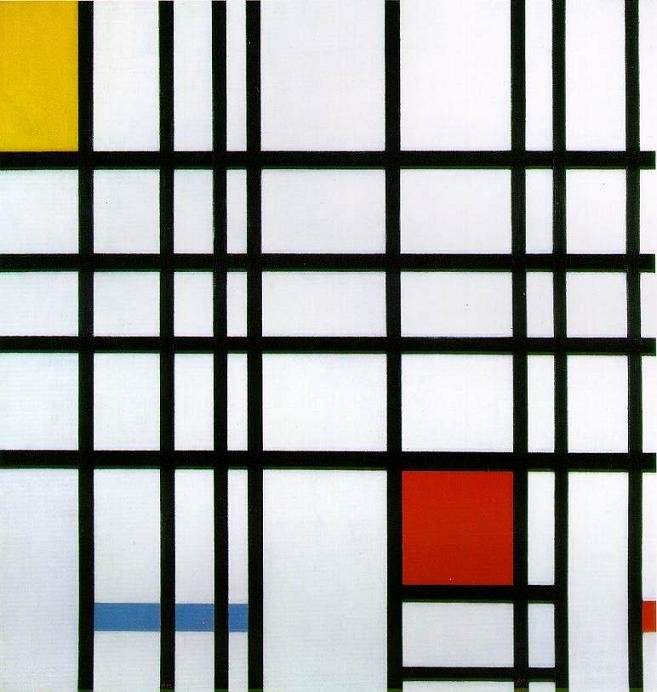
Bait Mondrian is one of the pioneers of the abstract school in painting. His name was associated with the development of what he later called the new plastic. It is a form of abstraction that relies on drawing a grid of horizontal and vertical black lines using basic colors.
Mondrian studied drawing at the School of Fine Arts in Amsterdam. When he graduated he worked as a teacher.
In his early days, he showed a tendency to draw landscapes in a manner close to Impressionism. But he later turned to abstract painting influenced by his study of philosophy and religion.
At that time, at the end of the nineteenth century, theosophical ideas were common, that is, those that combine religion and philosophy.
A theory has emerged that human understanding of nature can be achieved more deeply through non-experimental means.
At a later stage, he and a group of his colleagues devised a technical trend called "style". The influence of that trend was not confined to drawing, but also extended to architecture, theater and furniture design.
In this painting, we see a series of straight lines and rectangular shapes, some of which are divided into three main colors - red, blue, and yellow.
Some critics argue that this painting represents Mondrian's permanent quest for spiritual knowledge, simplicity, absolute harmony and purity of colors through the use of geometric shapes and formations.
The painting is one of the most important paintings of the 20th century, given its great influence on modern design and architecture.
Mondrian paintings can be seen as symbolic structures that reflect the nature of his vision of the dual universe. His baptism is the symbol of the spiritual and the masculine, and the horizontal symbol of material and feminine.
It is clear in the painting the predominance of white spaces on the other. Mondrian found that the white shapes give the painting more dynamism and depth. This feature became more evident in his paintings, which he performed in his life.
Mondrian says that abstraction is the only way to approach truth and return to origins and beginnings. But this can not be achieved unless the painter has a high degree of awareness and intuition that enables him to achieve the highest degree of rhythm and harmony.
The artist lived a period of his life in Paris, where Picasso met and was influenced by Cubism and absorbed. But it was just a passing stop in his career.
When Paris and the Netherlands fell to Nazism in 1940, he moved to London and then to New York, where he remained until his death.
Mondrian used all his paintings oil colors. In copies of his paintings on the Internet, the colors appear to have smooth, flat surfaces.
But brush strokes are evident in his original paintings in museums, such as the New York Museum of Modern Art and the British Tate Museum.
There are now some websites that employ graphics and other sophisticated techniques to reconstruct the Mondrian paintings, and even to make drawings similar to their paintings with some variation and modification.
In recent years, there has been a hypothesis that today's computer can produce lines, shapes and colors that are more pure, dynamic and harmonious than can be achieved on ordinary painting and using oil colors.
img by : Composition of yellow, blue and red by Dutch artist Bait Mondrian, 1921
Another great blog my friend,
I will resteem.
Thank you
Nice. art